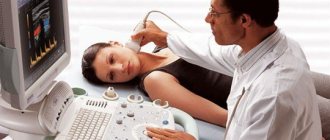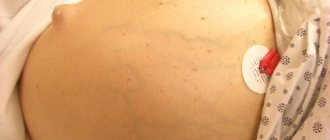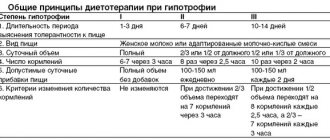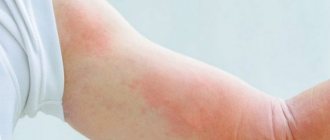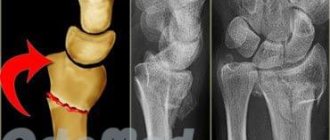Main symptoms:
- Abdominal pain
- Fast fatiguability
- Bloating
- Headache
- Dizziness
- Constipation
- Intestinal bleeding
- Sleep disturbance
- Chills
- Belching
- Fever
- Increased sweating
- Diarrhea
- Weight loss
- Sweating
- Spread of pain to other areas
- Vomit
- Weakness
- Decreased performance
- Nausea
Ischemic colitis is a disease characterized by ischemia (blood circulation disorders) of the vessels of the large intestine. As a result of the development of pathology, the affected segment of the intestine does not receive the required amount of blood, so its functions are gradually impaired.
Online consultation on the disease “Ischemic colitis”.
Ask a question to the specialists for free: Proctologist.
- Causes
- Forms
- Symptoms
- Diagnostics
- Treatment
- Diet
- Complications
- Prevention
Ischemic colitis predominantly affects older people. In more rare cases, the pathology affects people of working age.
Causes
Ischemic colitis is a complex pathology, the progression of which can be triggered by many unfavorable factors. The most common causes of the disease are the following: states:
- hypoperfusion. As this pathology progresses, the blood supply to the intestine is significantly reduced, which in the future leads to ischemia of certain areas;
- atherosclerotic vascular lesions. Atherosclerosis is a pathology in which a certain amount of lipids (fats) accumulate on the walls of blood vessels, which interferes with normal blood flow;
- vasculitis. In some forms of these ailments, the vessels located in the intestines may become inflamed;
- thrombosis. A blood clot can completely or partially block the lumen of an artery or vein, resulting in ischemia;
- DIC syndrome;
- intestinal neoplasms;
- aortic dissection;
- liver transplant;
- anemia;
- idiopathic colitis (the main cause of the disease is not known);
- intestinal obstruction;
- the use of certain groups of synthetic drugs. For example, hormonal.
Colitis
I
Colitis (colitis; Greek kolon large intestine + -itis)
inflammatory or inflammatory-dystrophic lesion of the colon. The process can be localized in all parts of the colon (pancolitis) or its individual parts (segmental colitis). With right-sided K. (typhlitis), the proximal parts of the colon are affected, with left-sided (sigmoiditis, proctosigmoiditis) - its distal parts. There are acute and chronic colitis. Ischemic colitis also occurs in the elderly and senile.
Acute colitis in the vast majority of cases is a manifestation of acute intestinal infections (dysentery, escherichiosis, yersiniosis, etc.), less often - allergies, poisonings of various natures. In acute K., the process often involves the small intestine (acute enterocolitis), as well as the stomach (acute gastroenterocolitis). Depending on the nature of the morphological changes, acute K. can be catarrhal, erosive, ulcerative, or less often fibrinous.
Characteristically acute onset. If the disease is infectious, an increase in body temperature and other signs of intoxication are observed. Stools are frequent, stools are light, liquid or mushy, sometimes lose their fecal character, contain an admixture of mucus, and often blood and pus. There are cramping pains in the abdomen, and if the distal parts of the colon are affected, there is tenesmus. The abdomen is swollen, the colon is spasmodic, painful on palpation, especially its distal parts. Impaired cardiovascular function may occur.
The diagnosis of acute K. is established on the basis of anamnesis and clinical picture. To confirm or exclude the infectious nature of the disease, a thorough bacteriological examination of stool is of greatest importance (see Stool, Microbiological diagnosis). Colonoscopy (Colonoscopy), sigmoidoscopy (Sigmoidoscopy), and X-ray examination are also used.
Treatment of acute K., depending on the severity of the condition, is carried out on an outpatient basis or in a hospital. On the first day of illness, sweet tea is prescribed, in the next 2-5 days - chemically and mechanically gentle food within the limits of diet No. 4 (see Medical nutrition) with its gradual expansion. To combat dehydration, saline solutions (Trisol, etc.) are administered orally or intravenously, depending on the severity of the disease. Prescribe enzyme preparations (festal, pancreatin, solisim, etc.), enveloping and adsorbing substances (dermatol, almagel, white clay, phosphalugel, etc.), and, according to indications, cardiovascular drugs. In case of the infarct nature of the disease, antibacterial agents are used. In mild cases, they are limited to prescribing a diet and symptomatic remedies, without resorting to antibacterial therapy. The prognosis is usually favorable. Prevention is mainly aimed at preventing intestinal infections.
Chronic colitis is a polyetiological disease. In most cases, its occurrence is associated with intestinal dysbiosis, which usually develops as a result of acute intestinal infections and is aggravated by long-term use of certain medications, mainly antibiotics. The cause of chronic K. can be parasitic infestations, chronic intoxication with industrial poisons (lead, arsenic, etc.). Chronic K. can occur with diseases of other parts of the digestive system, as well as other organs and systems of the body. Chronic K. of allergic nature has been described. Immune disorders play a role in the development of chronic colitis.
In chronic K., hyperemia, changes in the vascular pattern, sometimes erosion, hemorrhage are found in the mucous membrane of the colon; in some cases, its pallor and atrophic changes are revealed.
The leading symptom of chronic K. is stool disorder; Diarrhea is characteristic, especially with left-sided K. With an exacerbation of the disease, stools can become more frequent up to 10-15 times a day; the feces are liquid or mushy, the amount is small, it contains a lot of mucus; the urge to defecate is sometimes imperative. In some patients, the urge to defecate occurs when eating (gastroleocecal, or gastrointestinal reflex). Constipation is also possible (more often with right-sided K.). The stool may be unstable: diarrhea is replaced by constipation and vice versa. This type of stool disorder should be distinguished from the so-called false, or constipative, diarrhea (liquefaction of stool due to irritation of the colon mucosa), which occurs periodically in people suffering from persistent constipation. A constant symptom of chronic (especially right-sided) K. is abdominal pain, which is localized mainly in its lower parts, less often throughout the abdomen; with left-sided K. - in the left iliac region, with right-sided - in the right parts of the abdomen. More often the pain is aching, monotonous, less often paroxysmal, sometimes patients complain of a feeling of fullness that increases in the evening. The pain may intensify after eating, especially after eating certain vegetables and milk. When mesadenitis occurs, there is an increase in pain after defecation, enemas, sudden movements, and shaking. Damage to the rectum is accompanied by tenesmus and pain in this area after defecation. Patients with chronic K. complain of flatulence, increased passage of gas, rumbling and a feeling of transfusion in the abdomen. The general appearance of the patients is not changed, no significant weight loss is noted. Neurotic disorders and signs of dysfunction of the autonomic nervous system (fatigue, irritability, pulse lability, axillary hyperhidrosis, etc.) are often observed. The abdomen is moderately distended. Palpation reveals tenderness of the entire colon or its individual segments, the intestinal wall is thickened. When the serous membrane is involved in the process and the formation of adhesions, intestinal mobility decreases.
The diagnosis is established on the basis of anamnesis, clinical picture, as well as the results of instrumental and laboratory studies.
X-ray examination has become widespread in chronic K. The leading method in this case is Irrigoscopy, as well as filling the colon with a contrast mass through the mouth (the latter is used mainly to assess its motor and evacuation functions). Using X-ray methods, the localization and extent of the lesion (pancolitis, right- or left-sided colitis, transversitis), the nature of pathological changes (erosive, with symptoms of perivisceritis) and their severity, the predominant form of concomitant dyskinesia of the colon are determined. Of particular diagnostic value is the study of the relief of the mucous membrane of the colon. With K., the folds swell, take on a pillow-like shape, and may disappear completely; the direction of the folds is random, sometimes transverse; The appearance of small mobile filling defects caused by accumulations of mucus is characteristic ( Fig. 1 ). Radiological signs of usually concomitant dyskinesia (irritable bowel syndrome), manifested by intense segmental contractions of the colon, reaching a sharp spasm, are important. The intestine takes on the appearance of a cord, its contours in the area of spastic contractions have a jagged shape ( Fig. 2 ). Functional disorders of the colon are manifested by changes in the speed of passage of the contrast mass through it. Hypermotor dyskinesia is characterized by rapid (8-12 hours) emptying of the colon. Sometimes increased motility is observed only in some segments of the colon; in other parts of the colon, the contrast mass can linger for 48 hours or more. With hypomotor dyskinesia (constipation), there is a slowdown (sometimes for several days) in the passage of contents through the colon.
Endoscopic (colonoscopy, sigmoidoscopy) examination plays an important role in the diagnosis of chronic K. ( Fig. 3 ). The exacerbation of a chronic process can be judged by the results of laboratory tests. Signs of exacerbation in left-sided K. are an increase in the content of mucus, leukocytes, intestinal epithelial cells, and sometimes erythrocytes in the stool; in right-sided K. - the amount of iodophilic flora, digestible fiber, and intracellular starch (caecal scatological syndrome).
Differential diagnosis is carried out with enteritis, diverticulosis and diverticulitis of the colon , ulcerative colitis, and intestinal tumors. Differentiation of chronic K. with dyskinesia of the large intestine is of great importance, because The diagnosis of K. is often unreasonably made in patients with functional intestinal diseases. In this regard, the diagnosis “spastic colitis”, which is common in clinical practice, is not valid, because it usually means intestinal dyskinesia.
In the treatment of chronic K., which can be carried out both on an outpatient basis and in a hospital setting, the diet, which is prescribed depending on the phase of the disease and the nature of the stool disorder, is of great importance. During an exacerbation of severe diarrhea, mechanically and chemically gentle food is recommended; white crackers, low-fat weak meat and fish broths, steamed meat and minced fish, pureed porridge, low-fat pureed cottage cheese, and jelly are recommended. Whole milk and foods that are poorly tolerated by patients are excluded. As you feel better, the diet expands, but during the period of remission, foods that irritate the intestinal mucosa (strong drinks, spices, marinades) are still excluded from the diet. If constipation predominates, the diet includes boiled vegetables, dried fruit compotes, some fresh fruits and vegetables, and “Health” bread.
In case of exacerbation of chronic K., short courses of antibacterial or antiparasitic drugs are prescribed - antibiotics (ampicillin, tetracycline, erythromycin, etc.), sulfonamides (phthalazol, sulgin, etc.), poorly absorbed in the intestines, salazosulfonamides (sulfasalazine, salazopyridazine), biseptol, derivatives 8 -hydroxyquinoline (intestopan, nitroxoline, etc.), nitrofuran derivatives (furazolidone, furadonin), nevigramon, metronidazole (trichopol). When choosing a drug, take into account its tolerability by the patient, as well as the nature of dysbiosis (for example, if staphylococcus predominates in the intestinal microflora, drugs of the nitrofuran series are indicated; if Proteus predominates, Nevigramon, Biseptol are indicated). Bacterial preparations are also prescribed - colibacterin, bificol, bifidumbacterin.
Enzyme preparations are used, and for pain - anticholinergic (atropine, belladonna preparations, metacin, etc.) and antispasmodic (papaverine, no-shpu, halidor, etc.) agents. For diarrhea, imodium, adsorbents, calcium carbonate, heated mineral waters (Essentuki No. 4 and 20, Berezovskaya), as well as infusions and decoctions of medicinal herbs that have an astringent and anti-inflammatory effect (blueberries, bird cherry fruits, oak bark, sage leaves) are indicated , alder fruit, etc.). For constipation, sorbitol and mineral waters (Essentuki No. 17, Batalinskaya, Smirnovskaya, Slavyanovskaya) are effective; Senna leaf, buckthorn bark, joster fruit, rhubarb root, and seaweed have a laxative effect. For persistent constipation, bran is recommended, which is brewed with boiling water before use and infused, then taken in pure form or added to foods, starting with a teaspoon and increasing the dose to 1-2 tablespoons 3 times a day. For severe flatulence, medicinal herbal collections include chamomile flowers, dill seeds, caraway fruits, centaury stems, etc.
In the complex of therapeutic measures, an important place is occupied by sedatives, psychotherapy, acupuncture, as well as physiotherapy (warming compresses on the abdomen, electrophoresis of calcium chloride, novocaine, papaverine, mud therapy, etc.). Sanatorium-resort treatment is carried out in local sanatoriums and balneological resorts (Druskininkai, Caucasian Mineralnye Vody, Truskavets, Feodosia).
The prognosis for chronic K. is favorable. However, a long-term process with persistent constipation is a risk factor for the development of colon cancer.
Prevention includes the prevention and timely treatment of intestinal infections and intoxication, the rational use of antibacterial agents in the treatment of various diseases.
Ischemic colitis occurs due to impaired mesenteric circulation caused by various vascular pathologies. More often, its cause is atherosclerosis of the mesenteric vessels, less often hemorrhagic vasculitis, periarteritis nodosa, systemic lupus erythematosus, etc. The area of the splenic angle of the colon is predominantly affected. Depending on the caliber of the affected vessel, the speed of its occlusion, and the state of the collaterals, ischemic blood flow can be necrotizing (fulminant), stenotic (caused by a gradual slowdown in blood flow), and reversible (benign). The disease begins acutely with severe pain in the left half of the abdomen; flatulence, vomiting and other dyspeptic disorders are observed. About half of patients experience diarrhea, often with blood. There may be constipation or alternating diarrhea and constipation. Body temperature is often elevated. Palpation reveals severe pain along the descending colon, often tension in the anterior abdominal wall in the left half of the abdomen. With necrotizing ischemic K., a typical clinical picture of an acute abdomen develops (Acute abdomen). With stenotic ischemic K., the outcome of the disease is strictures of the colon.
The diagnosis is made on the basis of the clinical picture and instrumental examination data. During sigmoidoscopy, blood entering the rectum from higher-lying parts of the intestine is detected. During colonoscopy, the mucous membrane of the colon is swollen, in the area of ischemia there may be ulcerative defects, polypoid formations (pseudopolyps). An X-ray examination of the colon identifies pseudopolyps, haustration disorders, and strictures. Selective mesenteric angiography and aortography are of important diagnostic value.
In the clinical picture of an acute abdomen, emergency surgery is indicated - resection of the affected part of the colon. In other cases, a gentle diet, antispasmodic and anticholinergic drugs, analgesics, and nitrates are prescribed. When infection occurs, antibiotics and sulfonamides are indicated. The most effective is removal of the affected inner lining of the artery (endarterectomy) and vascular plastic surgery. Cardiac glycosides, which cause constriction of mesenteric vessels, are not indicated. When strictures develop, resection of the narrowed section of the colon is performed. The prognosis depends on the extent of intestinal damage.
Features of colitis in children . In acute K., the course of the disease and therapeutic measures in children are the same as in adults. Chronic K. in children, as a rule, is the outcome of acute intestinal infections, most often dysentery. Less common causes of chronic K. are amoebiasis, giardiasis balantidiasis, helminthic infestations, and mushroom poisoning. Dysbacteriosis and disorders of the nervous and humoral regulation of the intestine are of great importance in the development of the disease. A certain role is assigned to the reduction of local immunity of the colon mucosa and autoimmune processes. The development of the disease is facilitated by the irrational use of antibiotics, unbalanced nutrition (predominance of carbohydrates in food, deficiency of proteins and vitamins), food allergies, physical and neuropsychic stress, and diseases of other organs. When the disease lasts up to 2-3 years, as a rule, segmental colon is observed, with damage mainly to the distal parts of the large intestine, which is facilitated by such anomalies of its development as dolichosigma, megacolon (see Intestine). With a longer process, pancolitis develops.
The clinical picture depends both on the phase of the disease and the localization of the pathological process. During exacerbation, abdominal pain is noted, often paroxysmal, localized around the navel or along the colon in the right (with typhlitis) or left (with sigmoiditis) iliac region. The pain intensifies before defecation, with flatulence, physical activity, and excessive consumption of fresh fruits, vegetables, and milk. The equivalent of pain in young children is the symptom of “slipping” (loose stool after eating), caused by an increase in the gastroileocecal reflex. Rumbling in the intestines, flatulence, and increased release of gases are noted. Characterized by constipation, which can be replaced by diarrhea. The stool becomes more frequent and becomes pasty or liquid. Nausea, belching, and less commonly heartburn and vomiting are observed, in most cases due to involvement of the upper digestive tract in the process. On palpation, the large intestine is painful, spasmodic in places. In the stage of incomplete clinical remission, children have no complaints, but pain on palpation and stool disorders persist. In the stage of clinical remission, children feel healthy, but examination reveals changes in the colon.
K. caused by clostridia, which usually develops after taking broad-spectrum antibiotics (pseudomembranous K.), is somewhat unique. Characterized by sudden, paroxysmal abdominal pain without clear localization, diarrhea or constipation. The feces are fragmented, shrouded in mucus, and contain almost no remains of undigested food. The course of the disease is undulating. exacerbations are usually associated with ingestion of food containing allergens.
Diagnosis of K. is based on anamnesis, clinical picture, results of microscopic examination of feces (increased amount of fiber, starch, mucus, leukocytes, red blood cells, neutral fats, fatty acids, iodophilic bacteria), x-ray studies (changes in the relief of the colon mucosa, tone disorders , motor skills). The most informative are colonoscopy and sigmoidoscopy (the mucous membrane of the colon is hyperemic, moist, shiny, the pattern is poorly visible, erosions can be detected; with proctosigmoiditis, catarrhal, erosive-ulcerative or subatrophic changes are detected).
In case of exacerbation of chronic K., hospitalization is indicated. Bed rest is prescribed until spontaneous pain disappears. Diet No. 4 is used, for diseases of allergic origin - diet T (hypoallergic) with the exclusion of dairy products, eggs, and limitation of flour products; with concomitant damage to the small intestine and the development of malabsorption syndrome, a gluten-free diet that excludes flour products, semolina and oatmeal porridges, sausages, sausages, strong meat broths and sauces can be effective. The ratio of fats and carbohydrates in the diet of children with chronic K. approaches the physiological norm, the amount of proteins can be increased by 10-15%. Fats included in the recommended diet should contain fatty acids with a medium-length carbon chain (lean meats, fish, vegetable oil, eggs). When prescribing drug treatment, drugs used in adults are mainly used, but antibiotics and sulfonamides are rarely used. The most effective in childhood are bacterial preparations that normalize intestinal microflora (colibacterin, bifidumbacterin, bificol), and specific bacteriophages. Children are often given local treatment (microenemas with sea buckthorn, rose hip, eucalyptus oil, Shostakovsky balm, etc.). Physiotherapeutic treatment is widely used (in case of exacerbation - warming compresses, warm heating pads on the stomach, electrophoresis of novocaine, calcium chloride, during remission - mud therapy, diathermy, ozokerite paraffin), abdominal massage, exercise therapy. Sanatorium-resort treatment is carried out no earlier than after 3-6 months. after discharge from the hospital. The prognosis is favorable. Prevention of acute K. includes a balanced diet, strict adherence to the rules of personal hygiene; To prevent the process from becoming chronic, timely treatment of acute intestinal infections and clinical observation of children, especially those who have suffered acute colitis, are necessary.
See also Intestine, Sigmoiditis, Typhlitis, Ulcerative nonspecific colitis.
Bibliography: Abasov I.T. and Nogaller A.M. Chronic non-ulcerative colitis, Baku, 1984; Antonovich V.B. X-ray diagnosis of diseases of the esophagus, stomach, intestines, p. 323, M., 1987; Diseases of the digestive system in children, ed. A.V. Mazurina, s. 254, M., 1984; Rosenshtrauch L.S., Salita X.M. and Gutsul I.P. Clinical radiodiagnosis of intestinal diseases, p. 137, Chisinau, 1985; Frolkis A.V. Chronic enterocolitis, L., 1975; Chronic nonspecific intestinal diseases in children, ed. A.A. Baranov and A.V. Abolensky, s. 107, M., 1986.
Rice. 3a). The endoscopic picture of the colon is normal: the intestinal lumen is clearly visible, the mucous membrane is of normal color, its folds are deep and pointed.
Rice. 1. X-ray of the descending colon under double contrast conditions in chronic colitis: changes in the relief of the mucous membrane.
Rice. 3b). Endoscopic picture of the colon in chronic erosive colitis: the mucous membrane is hyperemic, its folds are swollen, erosions are visible.
Rice. 2. X-ray of a section of the colon in chronic colitis: the intestine is spasmodic, its contours have a jagged shape.
II
Colitis (colitis; Col- + -itis)
inflammation of the colon mucosa.
Alimentary colitis (p. alimentaria) - K., developing as a result of malnutrition or digestion or as a manifestation of food allergy.
Allergic colitis (p. allergica) - K., developing as a manifestation of food or drug allergies.
Amoebic ulcerative colitis (nrk; p. amoebica ulcerosa) - see Amoebic colitis.
Amoebic colitis (s. amoebica; synonym K. amoebic-ulcerative - nrk) - K. caused by the introduction of Entamoeba histolytica into the tissue of the colon with the subsequent formation of ulcers in it; the main manifestation of amoebiasis.
Atrophic colitis (s. atrophica) is a chronic colitis accompanied by atrophy of the mucous membrane of the colon.
Balantidiasis colitis (s. balantidialis) - K., caused by the introduction of Balantidium coli into the tissue of the colon with the subsequent formation of ulcers in it; manifestation of balantidiasis.
Secondary colitis (s. secundaria) - K., observed with damage to other organs (for example, with gastritis, cholecystitis).
Hemorrhagic colitis (p. haemorrhagica) - K., accompanied by bleeding from an eroded or ulcerated wall of the colon.
Dysbacteriosis colitis - K., developing with dysbiosis, for example, as a complication of drug therapy.
Constipative colitis (p. constipata) - K., developing as a result of frequent constipation.
Invasive colitis (p. invasiva; synonym K. parasitic) - K. developing with any parasitic disease as its clinical syndrome.
Intoxication colitis (syn. K. toxic) - K. caused by exogenous or endogenous intoxication.
Infectious colitis (p. infectiosa) - K. that develops with any infectious disease as its clinical syndrome; often combined with enteritis.
Ischemic colitis (s. ischaemica) - K., caused by circulatory disorders in the vessels of the mesentery of the colon, for example, with stenosing sclerosis or slowly developing arterial thrombosis.
Catarrhal colitis (p. catarrhalis) - K., characterized by hyperemia and swelling of the mucous membrane with the formation of abundant, mainly mucous, exudate.
Cystic colitis (c. cystica) - K., accompanied by blockage of the intestinal crypts, which leads to the accumulation of mucus in them and cystic expansion.
Left-sided colitis - K., in which the parts of the colon located on the left (descending colon, sigmoid colon) are predominantly affected.
Radiation colitis (p. radialis) - K., caused by exposure to ionizing radiation on the body.
Medicamentous colitis (p. medicamentosa) - K., developing as a complication of drug therapy; observed, for example, with the development of allergies or dysbacteriosis.
Necrotizing colitis (s. necrotica) - K., accompanied by necrosis of the mucous membrane of the colon.
Acute colitis (p. acuta) - K., characterized by a sudden onset, diarrhea, enteralgia and, as a rule, a short course.
Parasitic colitis (p. parasitaria) - see Colitis invasive.
Superficial colitis (s. superficialis) - K. with localization of the pathological process in the superficial layer of the mucous membrane of the colon.
Polypous colitis (c. polyposa) - K., accompanied by the formation of one or several polyps on the mucous membrane of the colon.
Postresection colitis (p. postresectionem) - K., developing as a result of extensive resection of the intestine or stomach.
Right-sided colitis - K., in which the parts of the large intestine located on the right (cecum and ascending colon) are predominantly affected.
Segmental colitis (s. segmentalis) - K. with isolated damage to one or several parts of the large intestine (for example, typhlitis, transversitis, proctosigmoiditis).
Toxic colitis (p. toxica) - see Intoxication colitis.
Fibrinous colitis (c. fibrinosa) - K., in which fibrin is deposited on the mucous membrane in the form of films.
Follicular-ulcerative colitis (p. folliculoulcerosa) - K., accompanied by suppuration or ulceration of the lymphatic follicles of the intestinal wall.
Follicular colitis (p. follicularis) - K., accompanied by multiple enlargement of the lymphatic follicles of the intestinal wall.
Chronic colitis (c. chronica) - K., characterized by a gradual onset and long course with alternating remissions and exacerbations.
Erosive colitis (s. erosiva) - K., characterized by the formation of erosions in the mucous membrane of the colon.
Ulcerative colitis (p. ulcerosa) - K., characterized by the formation of ulcers in the mucous membrane of the colon.
Source: Medical Encyclopedia on Gufo.me
Meanings in other dictionaries
- colitis - Colitis, colitis, colitis, colitis, colitis, colitis, colitis, colitis, colitis, colitis, colitis, colitis Zaliznyak’s Grammar Dictionary
- colitis - COLIT, a, m. Inflammation of the colon. | adj. colitis, oh, oh. Ozhegov's Explanatory Dictionary
- colitis - Colitis, m. [from Greek. kolon – large intestine] (honey). Colitis. Chronic colitis. Nervous colitis. Large dictionary of foreign words
- colitis - KOL'IT, colitis, male. (from Greek kolon - large intestine) (honey). Colitis. Chronic colitis. Nervous colitis. Ushakov's Explanatory Dictionary
- colitis - noun, number of synonyms: 2 disease 995 inflammation 320 Dictionary of synonyms of the Russian language
- colitis - a, m. Inflammation of the colon. [From Greek κω̃λον - colon] Small academic dictionary
- colitis - Colitis/. Morphemic-spelling dictionary
- colitis - COLIT a, m. colite f. < kolon large intestine. Inflammation of the colon. Krysin 1998. Acute colitis. Chronic colitis. BAS-1. Colitis is painful and requires a sophisticated diet. 22. March 1929. G. V. Chicherin - to Stalin. Dictionary of Gallicisms of the Russian language
- colitis - COLIT -a; m. [from Greek. kolon - large intestine] Inflammation of the large intestine. Acute, chronic k. Kuznetsov's Explanatory Dictionary
- colitis - spelling colitis, -a Lopatin's Spelling Dictionary
- Colitis - (from the Greek kólon - large intestine) inflammation of the large intestine. One of the most common diseases of the gastrointestinal tract. The reasons for the occurrence... Great Soviet Encyclopedia
- colitis - colitis m. Inflammatory-dystrophic lesion of the large intestine. Explanatory Dictionary by Efremova
- COLITIS - COLITIS (from the Greek kolon - large intestine) - acute and chronic inflammatory diseases of the large intestine caused by infection, gross errors in nutrition and other reasons. Large encyclopedic dictionary
- Colitis - (colitis) - simple catarrhal inflammation of the mucous membrane of the colon, which also includes proctitis - inflammation of the rectum; observed as a primary or secondary form of the disease. Encyclopedic Dictionary of Brockhaus and Efron
- colitis - COLITIS (Colitis, from the Greek kolon - large intestine), inflammation of the mucous membrane of the large intestine. • see enterocolitis Veterinary Encyclopedic Dictionary
- Blog
- Jerzy Lec
- Contacts
- Terms of use
© 2005—2020 Gufo.me
Forms
Ischemic colitis, according to the nature of the pathological process, is:
- sharp;
- chronic.
In turn, acute ischemic colitis occurs:
- with progression of intestinal mucosal infarction. Necrosis (necrosis) of this organ occurs due to disruption of its blood supply;
- with progression of intramural infarction. The zone of necrosis is localized inside the wall of the large intestine;
- with progression of transmural infarction. As a result of the development of this process, absolutely all intestinal walls are affected.
Chronic ischemic colitis usually occurs with abdominal pain, nausea and bowel dysfunction. In severe clinical cases, intestinal strictures develop - pathological narrowing of a certain area.
Clinicians also distinguish three forms of this disease:
- transient. Blood circulation in the vessels is not often disrupted, but against the background of this process inflammation develops, which passes over time;
- stenotic , also called pseudotumorous . Circulatory disorders are permanent. The inflammatory process progresses, resulting in scarring of the intestinal wall;
- gangrenous colitis . This form of the disease is the most severe and dangerous for both the health and life of the patient. All layers of the walls are affected. Against this background, complications progress.
Frequency of ischemic lesions in various parts of the colon
Radiation colitis: causes, nutrition and treatment
Acute and chronic side effects occur after pelvic radiation, usually for prostate or female genital cancer. Usual doses: prostate cancer - 64-74 Gy, cervical cancer - 45 Gy, endometrial cancer - 45-50 Gy, rectal cancer - 25-50.4 Gy, bladder cancer - 64 Gy.
Focal lesion of the rectum
may be the result of brachytherapy: implantation of radioactive grains or intracavitary irradiation. Radiation damage can occur in areas outside the radiation fields: for example, scattered radiation can lead to diffuse radiation enteritis!
Damage depends on total dose
(usually >40 Gy), beam energy and focal dose, fraction size and field, delivery time, tissue proliferation and oxygenation.
There are two phases in the development
: 1.
Acute
: usually self-limiting cytotoxicity of radicals and induced DNA damage in rapidly renewing cell populations (intestinal epithelium, bone marrow, skin appendages, etc.).
2. Chronic
: permanent and irreversible damage associated with microischemia as a result of obliterating endarteritis, endothelial degeneration, neovascularization, interstitial fibrosis, epithelial destruction.
The role of preventive drugs (balsalazide, misoprostol, sucralfate, etc.) in the administration of radiotherapy remains controversial.
a) Epidemiology
: • Early damage: 30-70% of patients exposed to pelvic irradiation during
Rectovaginal fistula after radiation therapy for cervical cancer
c) Differential diagnosis
: • Tumor recurrence, IBD (ulcerative colitis, Crohn's disease, indeterminate colitis), ischemic colitis, infectious colitis (including pseudomembroidal colitis caused by C. difficile), proctitis due to STDs (for example, gonorrheal, lymphogranuloma venereum), IBS. • Caution: Avoid “quick” diagnosis/treatment for “hemorrhoids” in patients with irradiated rectum!
d) Pathomorphology of radiation proctitis and enteritis
Macroscopic examination
: • Hyperemic/edematous mucosa, necrosis, ulceration/fistula openings, telangiectasia, strictures, shortening of the intestine.
Microscopic examination
: • Acute damage: epithelial ulceration, meganucleosis, inflammation of the lamina propria, lack of mitotic activity. • Chronic damage: fibrosis of the subintima of arterioles (obliterating endarteritis), degenerative changes in the endothelium, fibrosis of the lamina propria, damage to the crypts, hypertrophy of the Auerbach plexus of the muscular layer of the intestine.
e) Examination for bowel inflammation after radiotherapy
Minimum standard required
: • Rigid or fibrosigmoidoscopy: usually sufficient to establish the diagnosis, a complete examination of the bowel is performed according to general indications. • Caution: biopsy of anterior lesions/ulcers is contraindicated due to the risk of iatrogenic rectovaginal/rectovesical fistula formation!
Additional research (optional)
: • X-ray contrast studies (with barium or gastrografin) in cases where it is impossible to perform colonoscopy (for example, stricture) or the need to determine the fistula tract. • Virtual colonoscopy: role uncertain, risk of perforation. • MRI, PET, PET-CT: role not defined. • Physiological studies: determination of the function of the anorectum (for example, the adaptive capacity of the rectum, etc.). • Laboratory tests: nutritional status. • Passage through the small intestine: signs of a “short” intestine (shortening?).
a – Radiation proctosigmoiditis.
The rectosigmoid colon is narrowed, tubular in shape, with loss of the valves of Houston. The mucous membrane of the rectosigmoid junction and the distal part of the sigmoid colon (shown by the arrow) is fine-grained. Ureteral stents in correct position. Barium enema, double contrast. b, d – Endoscopic picture of radiation colitis. The diagnosis was confirmed by the presence of multiple telangiectasias. c – Histological picture of radiation enteritis. Submucosal fibrosis and thickening of the vascular wall are observed without signs of inflammation. f) Classification
: • Radiation proctitis: acute or chronic, localized or diffuse. • Radiation enteritis: acute or chronic, localized or diffuse. • Secondary complications associated with irradiation (stricture, fistula, etc.).
Symptoms
The clinical picture primarily depends on the degree of circulatory disturbance in the large intestine. The larger the area affected by ischemia, the more pronounced the symptoms of the disease will be.
As the disease progresses, several characteristic symptoms are observed:
- severe abdominal pain. Its location may vary depending on the location where the affected area itself is located. The pain can be observed on the right or left, or be girdling. The pain symptom radiates to the neck, back of the head, subscapular and interscapular areas. It is observed constantly or occurs periodically and paroxysmally (periods of exacerbation alternate with periods of calm). The nature of the pain is pressing and dull. But if you do not pay attention to this symptom in time and do not visit a medical facility for diagnosis and treatment, then gradually the pain symptom intensifies and becomes intense, cutting, and acute.
The pain may intensify after exercise, eating, or due to constipation (a characteristic symptom).
- sweating increased;
- flatulence and bloating are observed;
- sleep disturbance;
- nausea and vomiting;
- belching with an unpleasant odor;
- intestinal bleeding;
- constant disturbance of stool. This is manifested by the patient having diarrhea alternating with constipation. In this case, this is a characteristic symptom;
- weakness and fatigue;
- weight loss;
- headache;
- an increase in body temperature is accompanied by chills.
If you have one or more of the above symptoms, it is recommended to immediately contact a qualified specialist for diagnosis, confirmation or refutation of the diagnosis. Self-medication in this case is unacceptable, since you can only aggravate your condition and provoke the development of complications.
Symptoms of the disease
The appearance and exacerbation of chronic colitis in adults and children is characterized by a number of signs:
- The first manifestation of the disease is pain of a spastic, aching nature. Often the location is the left iliac region, stomach. Upon examination, the doctor determines enlarged areas of the rectum. The pain becomes more pronounced after eating and goes away after bowel movements and gas release.
- The appearance of problems with bowel movements - often with constipation and the passage of stool that is fragmented and covered with mucus or diarrhea. “Constipative diarrhea” is also observed - the release of liquid feces after a portion of normal stool.
- Pain with the urge to have a bowel movement.
- Bloating, rumbling, increased formation of gases.
Diagnostics
First, the doctor analyzes the patient’s complaints. The symptoms, their nature and intensity are clarified. Next, an anamnesis of the patient’s life and the disease itself is collected. To diagnose the disease, laboratory and instrumental techniques are used to accurately diagnose and identify the cause of the pathology.
Laboratory methods:
- stool analysis;
- UAC;
- coagulogram;
- lipid spectrum of blood serum;
- OAM.
Instrumental techniques:
- ECG;
- bicycle ergometer test;
- Ultrasound;
- Doppler study;
- colonoscopy;
- angiographic examination;
- X-ray of the intestines;
- laparoscopy.
Types of colitis according to the nature of damage to the mucosa
In addition to the form of the disease and the topography of the pathology, the nature of the damage to the wall of the colon is distinguished. Inflammation can be catarrhal, atrophic, erosive, fibrinous, ulcerative.
Catarrhal type of disease
Catarrhal, or superficial, colitis occurs in the initial phase of the disease. Superficial colitis has an acute course and manifests itself after food or chemical poisoning or intestinal infection. It lasts for several days, affecting only the top layer of the mucous membrane. Then it is either cured or goes into another stage of the disease. Superficial intestinal colitis has the most favorable prognosis for recovery.
Erosive type of disease
The next stage of the disease is characterized by the formation of erosions on the mucous membrane - damage reaching small capillaries. The destruction of blood vessels ends in bleeding. A characteristic metallic taste is felt in the mouth.
Atrophic type of disease
At this stage of the disease, a long-term chronic process reaches the intestinal muscles. Muscles lose tone and can be either unnaturally compressed or completely relaxed. Peristalsis is impaired, constipation stretches and thins the intestinal walls. Constant contact with rotting feces leads to ulceration of the intestine, fistulas and wall perforations are possible.
Fibrinous type of disease
It is characterized by the presence of a dense film of fibrin threads on the surface of mucous defects. Classified in the literature as pseudomembranous colitis. It arises from the suppression of beneficial microflora by antibiotics or other medications and the activation of pathogenic strains of clostridia against this background.
Ulcerative type of disease
With ulcerative colitis in adults, numerous bleeding defects appear on the mucous membrane of the large intestine. Another name for the disease is nonspecific or undifferentiated colitis. Perennial undifferentiated colitis has a high risk of developing into cancer. In the ulcerative process, the colon and rectum are affected. In women, undifferentiated colitis is diagnosed 30% more often. It occurs chronically, with wave-like periods of exacerbation and remission. Patients suffer from cramping attacks in the abdomen, diarrhea with blood, and signs of general intoxication.
Treatment
A course of treatment can only be prescribed by a qualified specialist after diagnosis and evaluation of the results obtained. In many ways, therapy depends on the degree of damage to the intestinal vessels. A standard treatment plan includes:
- purpose of diet No. 5. The patient is advised to reduce the consumption of spicy, fried and fatty foods;
- normalization of hyper- and dyslipidemia. In this case, it is necessary to stop the progression of atherosclerosis;
- drugs are prescribed whose main effect is aimed at reducing blood viscosity;
- vasodilators;
- hypoglycemic drugs;
- nitrates. These substances help relieve pain;
- symptomatic therapy. In this case, all measures are aimed at reducing the symptoms of the disease;
- essential phospholipids;
- enzymatic preparations;
- if the patient is overweight, then it is necessary to normalize it;
- Surgical treatment is indicated in the most difficult clinical situations, and it consists of removing the affected part of the large intestine.
Etiology and pathogenesis
When carrying out radiation therapy for malignant tumors of the abdominal cavity, pelvis and genitals, irradiation inevitably occurs in various areas of the small or large intestine. In case of irradiation at doses exceeding tolerance (for the small intestine 35 g, for the colon 40-45 g), 10-15% of patients develop early or late radiation damage. Such injuries have a characteristic clinical picture. The course and outcome of radiation injuries depend on the radiation dose and some other factors.
Radiation damage to the intestine most often occurs in patients undergoing radiation therapy for tumors of the pelvis (uterus, cervical canal, prostate, testicles, rectum, bladder) or lymph nodes.
Compared to the large intestine, the small intestine is more sensitive to radiation but is less at risk of radiation damage. This is due to the fact that the small intestine is more mobile than fixed parts of the intestine. Due to its fixed position within the pelvis and close proximity to the site of radiation exposure, the rectum is vulnerable to damage. Often it has a segmental nature - the rectum or sigmoid colon, a segment of the small intestine.
The epithelium of the small and large intestine is especially susceptible to acute radiation injury. As a result of the death of the epithelium, the villi of the small intestine are shortened, and the number of dividing cells in the crypts rapidly increases. Signs of inflammation appear in the lamina propria in the form of pronounced neutrophilic infiltration. In the colon, inflammation and atrophy of the mucous membrane usually lead to the development of acute colitis and proctitis.
After completion of radiation therapy, acute damage is accompanied by complete restoration of the mucous membrane.
Exposure to massive radiation can cause enteritis and colitis long time (sometimes years) after completion of radiation therapy. The threshold dose for delayed damage to the mucous membrane is in the range of 40 g. It is not associated with acute damage to the mucous membrane, but is a consequence of radiation damage to small vessels: endarteritis, microthrombi and intestinal ischemia. All this leads to the occurrence of fibrosis, swelling of the intestinal wall with the formation of narrowing, obstruction of the vessels of the mucous membrane with its secondary damage.
Diet
Diet plays one of the most important roles in the treatment of ischemic colitis. It can only be prescribed by a doctor. He can also create a proposed menu.
Products allowed for consumption:
- jelly, compote, weak tea;
- eggs in the amount of one piece per day;
- wheat or rye bread;
- vegetable oil;
- skim cheese;
- low-fat cheese;
- porridge;
- greens and vegetables;
- soups prepared with vegetable broth;
- You can eat lean meat.
It is recommended to completely avoid the following products:
Pickled vegetables should be excluded from the diet
- pickled vegetables;
- products made from butter dough;
- soups with meat or mushroom broths;
- fats and lard;
- fried eggs;
- radishes, green onions and spinach;
- spicy seasonings;
- chocolate;
- alcohol;
- cocoa and black coffee.
Types of colitis by location in the intestines
The large intestine is conventionally separated from the small intestine by the bauhinian valve. The thick section consists of the cecum, colon and rectum. The colon is the longest and is divided into ascending, transverse, descending and sigmoid parts. The total length of the large intestine of an adult is from one and a half to two meters.
According to the anatomical principle, the types of colitis are distinguished:
- damage to the entire large intestine, or pancolitis;
- if inflammatory manifestations are noted only in the cecum, they speak of typhlitis;
- when the transverse part of the colon has undergone changes, transversitis is stated;
- the manifestation of inflammation of the sigmoid colon is called sigmoiditis;
- With inflammatory pathology of the rectum, proctitis occurs.
In real life, neighboring parts of the intestine are affected, for example, the sigmoid colon and rectum. The result is rectosigmoiditis. In practice, there are such varieties as left-sided and right-sided colitis, as well as diffuse, covering both the large and small intestines.
Right-sided inflammation
Inflammation of the cecum and adjacent ascending colon is conventionally called right-sided colitis. Occurs in approximately 20% of diagnosed cases of the disease. Manifested by diarrhea and pain on the right side. After defecation, temporary relief occurs. Leads to disruption of water-electrolytic metabolism and dehydration.
Left-sided inflammation
Damage to the left side is noted in 60% of patients. Left-sided colitis is diagnosed with inflammation of the descending colon, sigmoid and rectum. Rectosigmoiditis accounts for the bulk of inflammation. It is associated with constipation and increased secretion of mucous secretions from the rectal walls.
It is the irritation of the rectum by mucus that leads to the phenomenon of tenesmus. The patient feels the urge to defecate, but goes to the toilet with the same mucus with small lumps of feces mixed with strands of blood and pus.
Diffuse inflammation
It is very difficult due to the extensive inflammatory process that covers the entire thick section. The stomach hurts everywhere, and the pain can intensify on one side, then subside and spread to the other side. An aching, dull pain radiates either in the sacrum or in the sternum. The patient may mistakenly suspect problems with the kidneys or heart. Areas of spasmodic intestine alternate with an atonic intestinal wall. The urge to go to the toilet is frequent, but the volume of feces is small, they are mucous, foul-smelling, and greenish in color. There is an “alarm clock” syndrome when the desire to have a bowel movement wakes the patient up at 5-6 o’clock in the morning.
Consequences and complications
Unfortunately, complications after such operations are quite normal. Since the patients are quite old, the body is not able to immediately rebuild and normalize all its basic processes. After surgery, the patient may experience intestinal obstruction. Food either passes through the intestines too slowly, with difficulty, or does not pass at all, causing flatulence, bloating, nausea and vomiting reflexes.
Sometimes the intestinal wall can rupture, leading to infection throughout the body. The negative consequences of intestinal colitis also include an increase in the size of the large intestine and excessive hemorrhage.



